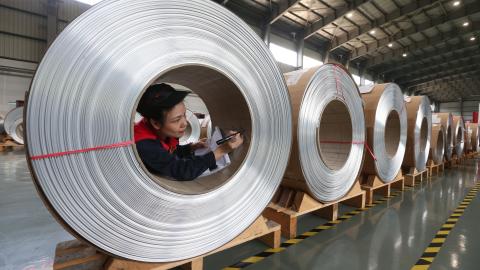When Xi Jinping abruptly ended his zero-COVID approach in January, investors nominated China as one bright spot in an otherwise gloomy global outlook.
Six months later, the prevailing mood is one of pessimism. Treasurer Jim Chalmers even cautioned last week that the China slowdown could become a serious concern for the Australian economy.
Yet, Chinese economy is performing as should be expected. The problem is that the earlier forecasts were offered by optimists with short memories and who elevated hope over evidence.
In late 2021, many of these same optimists were panicking about Evergrande. A nominally private firm but benefiting from deep connections to Communist Party officials at all levels of government, the company was China’s second-largest property developer with more than $US300 billion of debt and facing one of the largest defaults in economic history.
In 2018, Evergrande held 822 pieces of undeveloped land in 228 cities, with a planned floor area of about 1 billion square metres of new homes – equivalent to about 10 per cent of Germany’s entire housing stock. The Evergrande model simply explained is this: high debt, high leverage, high turnover, and low cost. Its strategy was not to increase profits, but scale, in the attempt to crowd out competitors.
Evergrande was of immense relevance because it was seen as a microcosm for much of the Chinese political economy. The problem for Evergrande, the Chinese residential housing market, and the entire country is that fixed investment has very little to do with meeting demand and responding to market signals.
For example, urbanisation has been growing at 1 per cent to 1.5 per cent a year since 1995. In that same period, growth in housing stock has been increasing by about 15 per cent per year. Real estate amounts to about 30 per cent of Chinese GDP. However, in 2021, about 20 per cent of urban houses were vacant.
This is because too many Chinese investors bought and sold residential housing as if it were a speculative and non-productive asset such as gold or bitcoin. Most homes were sold and even resold before completion, with tens of millions of buyers having no intention of ever occupying them or renting them out.
Local governments were in on the act, rezoning and selling land and buying and flipping residential property to bulk up their inadequate fiscal transfers from the central government. In a rising market, participants looked like geniuses.
As Warren Buffett reminds us, it is only when the tide goes out that we learn who has been swimming naked. The tide went out because Xi, fearing the consequences of a plunge into ever greater indebtedness, suddenly slowed down the rampant residential property speculation that he knowingly supported and enabled only years before.
The buzzword these days being used by Chinese authorities is “quality growth”. That is merely justification for the Chinese structural slowdown. Xi cannot force citizens to consume more (especially when household consumption is based largely on residential property prices), compel families to have more children to reverse the country’s ageing demographics, or eliminate over-capacity by strong-arming advanced economies to buy more Chinese goods.
In the first half of this year, authorities have decreased the reserve requirement ratio for banks. Mortgage and commercial lending rates have been lowered. State-owned banks have been leant on to increase loans, including to property developers and speculators.
But there are limits to simulating growth in this way because the Chinese banking and commercial sectors are already massively overleveraged. Additionally, since 2007, the incremental capital output ratio in China – the additional unit of capital to deliver one additional unit of output – has tripled from three to nine. In other words, Beijing’s primary way to stimulate growth is becoming less effective over time. This is not quality growth. China is simply running out of puff.
In fact, things are worse. There is a vicious spiral based on a deficit of trust: buyers don’t trust developers to secure the finance to complete projects; developers are unsure when the credit will suddenly dry up; and all are bracing for abrupt and unpredictable changes in government priorities that will leave them stranded.
Most Chinese economists are pessimistic because they realise Xi’s priority is to double-down on the stuttering state-led framework to consolidate his and the Communist Party’s power and relevance. Occasional tactical moves to avoid economic and financial disaster is not the same thing as addressing deep-seated problems. Under his watch, Xi has deliberately accelerated the suppression and retreat of the genuine private sector and stifled entrepreneurial initiative.
This is a problem because unleashing the private sector is the only sensible way forward for genuine quality growth. The private sector is about three times more efficient than the state-owned one when it comes to every relevant measure, such as use of capital, profitability, and total factor productivity.
Yet, banks lend mainly to less efficient state-owned and politically connected firms at lower rates because they are given privileged commercial access to key sectors and are protected by the Communist Party.
The only way for China to get out of its rut is for the state to oversee the massive transfer of opportunity, and therefore wealth, to the private sector and households. This is the only way for China to transition to a demand-driven economy in a sustainable way.
But no such reforms occurred during China’s zero-COVID hiatus. Which is why one should not expect different and better results after the pandemic.



















